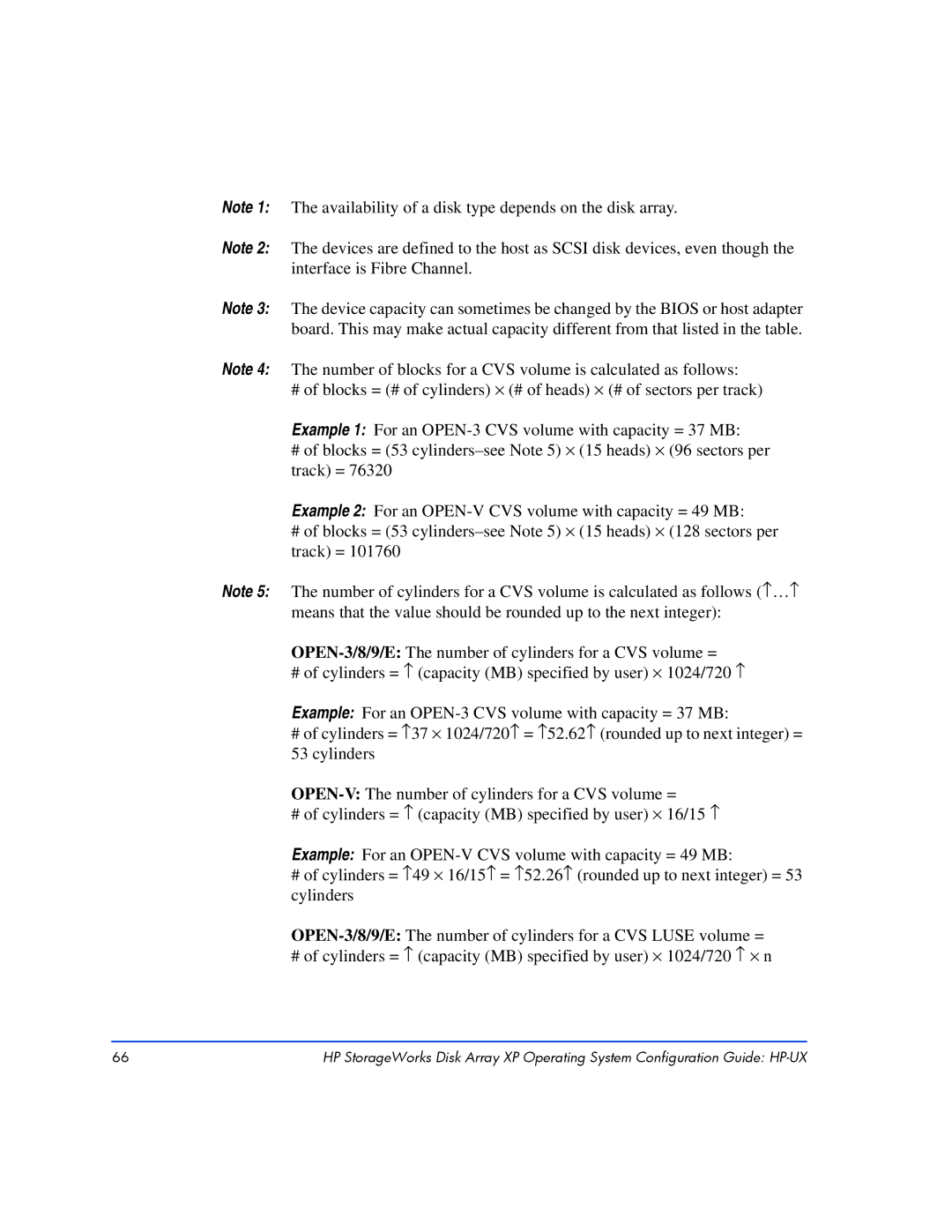Note 1: The availability of a disk type depends on the disk array.
Note 2: The devices are defined to the host as SCSI disk devices, even though the interface is Fibre Channel.
Note 3: The device capacity can sometimes be changed by the BIOS or host adapter board. This may make actual capacity different from that listed in the table.
Note 4: The number of blocks for a CVS volume is calculated as follows:
# of blocks = (# of cylinders) × (# of heads) × (# of sectors per track)
Example 1: For an
#of blocks = (53
Example 2: For an
#of blocks = (53
Note 5: The number of cylinders for a CVS volume is calculated as follows (↑…↑ means that the value should be rounded up to the next integer):
# of cylinders = ↑ (capacity (MB) specified by user) × 1024/720 ↑
Example: For an
#of cylinders = ↑37 × 1024/720↑ = ↑52.62↑ (rounded up to next integer) = 53 cylinders
# of cylinders = ↑ (capacity (MB) specified by user) × 16/15 ↑
Example: For an
#of cylinders = ↑49 × 16/15↑ = ↑52.26↑ (rounded up to next integer) = 53 cylinders
# of cylinders = ↑ (capacity (MB) specified by user) × 1024/720 ↑ × n
66 | HP StorageWorks Disk Array XP Operating System Configuration Guide: |
